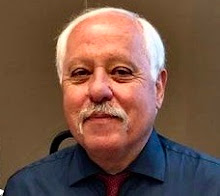Editor's Note: As a longtime Duck basketball fan, and in response to recent news/editorials in The Oregonian lamenting the lack of attendance at games, I sent the following email to Rob Mullens, the University of Oregon Director of Athletics.
"As a Duck basketball season ticket holder, I was disheartened to read in The Oregonian that Dana Altman, whom I consider a great coach and one of the best hires ever, was so frustrated after the NIT game against Wisconsin that he took way too much responsibility for the lack of fans in the stands.
While appreciating Dana as a stand-up guy, the actual reasons for the dearth of fans at the game extend way beyond the performance of the team or the coaches. The UO Athletic Department should become more circumspect and consider the real issues for poor attendance numbers at men’s games: lack of parking, overpriced tickets and too many late games.
Let’s start with the the severe lack of parking. Clearly, the parking allotment underneath Matthew Knight Arena is woefully insufficient to accommodate the number of fans in a full -- or even partly full -- arena. Furthermore, street parking has for all intents and purposes been banned by a shortsighted and draconian Eugene City Council.
To add insult to injury, city parking police monitor the neighborhoods near the arena and pounce on unsuspecting fans with expensive parking tickets. Fans also have the option of paying for parking at the limited number of lots available nearby, but that adds to the cost of the experience.
Speaking of cost, the men’s basketball team has been a victim of its own success, as witnessed by increased ticket prices over the years. By comparison, tickets for women’s basketball are much more reasonably priced, and they seem to be attracting decent crowds for their NIT games.
Whatever happened to Bi-Mart two-for-one tickets? The UO Athletic Department should devise more creative ways to price tickets in the interest of attracting more fans.
Another key detriment to attendance has been the sheer welter of late games, with 7-8 p.m. start times effectively putting a damper on attendance. How many fans from Portland, UO’s largest alumni base, are willing to spend 4-6 hours on Interstate 5 on game nights, especially when they can watch the contest on television?
Admittedly, the coronavirus pandemic hasn't helped with attendance over the last few years, but attendance at men’s basketball games, in stark contrast to the women’s basketball games, is not demonstrating resiliency.
Dana Altman is not the problem. He is a Hall of Fame coach-in-waiting who recruits well and has won consistently. I hope he will remain at Oregon for many years to come.
The athletic department needs to develop new approaches to address the real issues for the lack of attendance: provide more parking options and get creative with sliding-scale ticket prices and scheduling of game times.
As always, go Ducks!"




